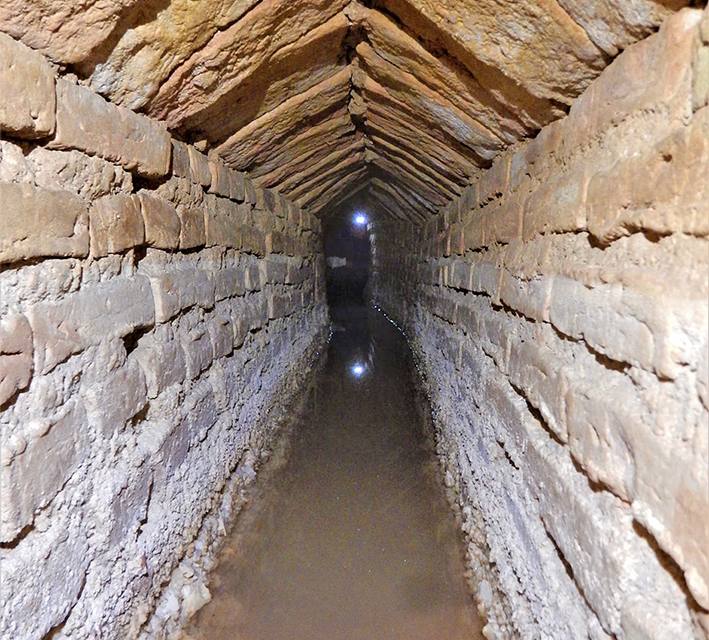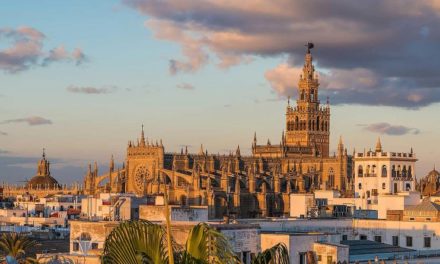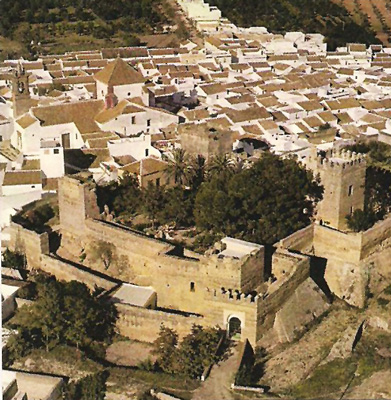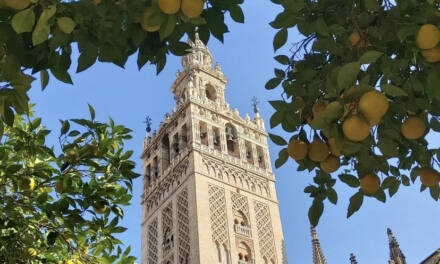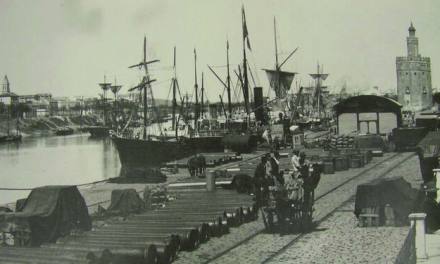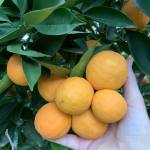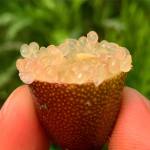There are dozens of kilometres of water galleries in the micro-region of “Los Alcores” (a word of Arabic origin meaning “rounded hills”, formed some 11 million years ago), where one of the most important aquifers in southern Spain is located. This place is about 25 km from Seville and has been a privileged area for the cultivation of citrus fruits since time immemorial.
Many of these galleries were built in Roman times. The most important of these is known as the “Caños de Carmona”. This is a 17.2 km underground gallery, with a 1.2 km overhead section of arches in the form of an aqueduct (3 of its sections are still visible in the city of Seville), which runs from Alcalá de Guadaíra to Seville. It was excavated when Julius Caesar took office as quaestor in Híspalis (present-day Seville), between 68 and 65 BC. Alcalá is one of the four important towns of Los Alcores, together with Carmona, Mairena del Alcor and El Viso del Alcor. Alcalá was called Hienipa by the Greeks, meaning “underground water”. Mairena comes from Maharana, which means “water from the source”. All this proves once again what we are saying.

Europapress.es
At that time, the city of Seville had enough water to supply itself from the river and some of its wells. However, many of these wells had salt or bitter water. In addition, there was the problem of the periodic flooding of the Guadalquivir, which muddied the water. For all these reasons, it was necessary to transport drinking water from upriver in carts, a task that was not at all practical. Thus, the wealth of pure and healthy water from Los Alcores was the perfect solution to the problem the city was suffering.
The Romans knew how to take advantage of the potential of this underground water with an astonishing engineering work. The Los Alcores aquifer has an extension of some 1,150 square kilometres and a thickness of up to fifty metres in the alcores and twenty metres in the so-called quaternary terraces.
What these Roman galleries were like
One of the characteristic elements of these galleries are the “lumbreras”. The function of these shafts was to serve as an entrance for the workers to enter the gallery to carry out maintenance and unblocking work. They were also used to provide the air they needed to breathe. The excavation of the shafts was simple. First, a circumference or rectangle was traced on the ground and, from there, the excavation teams began to dig until they reached the calculated level.

Photo: José Luis Boza Bonilla.
Another striking element are the “mechinales” or holes dug parallel to the shaft and used as a stairway (see photo). In the case of the circular lintels, their structure is reminiscent of the hypogean wells excavated in Carmona (considered the oldest city in the interior of Europe) for access to the hypogean tombs, a fact which would serve to date them to at least the 1st century.
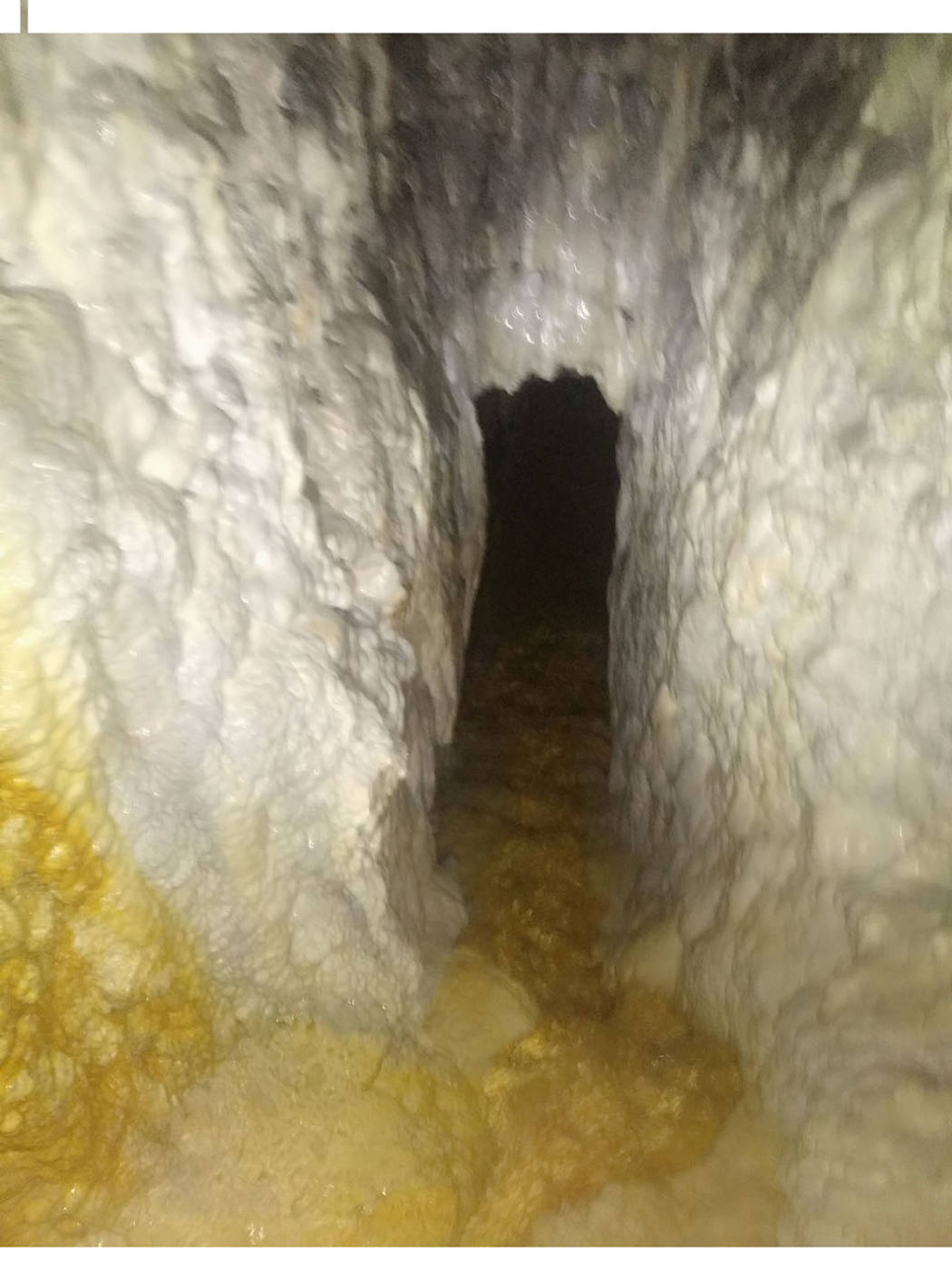
Photo: José Luis Boza Bonilla.
The next step was the excavation of the galleries, which was carried out using the method of two teams digging in opposite directions, from one shaft to the next, where directions and heights were rectified. The galleries are normally built with slopes that do not usually exceed 0.5% gradient, to avoid water currents that cause wear and tear to the galleries, the dragging of sediments and possible landslides. These slopes were worked after the galleries were built until the correct water flow was achieved.
Uses of these water galleries
With regard to the function of these galleries, their applications were very diverse. They were used to supply water to settlements, villages, mining activities (ashlar quarries), pottery workshops, etc. Agricultural activity was guaranteed in this area, as water was one of its secrets, along with the quality of its soil and its ideal climate. Agricultural activity was guaranteed in this area, water was one of its secrets, together with the quality of its soil and its ideal climate. It is known that in Los Alcores during the Middle Ages the cultivation of orange groves was very common, hence the famous oranges of Mairena del Alcor which were sold in Seville with the cry of “De Mairena las buenas” (The good ones from Mairena).
The subsoil of Los Alcores still undoubtedly conceals many of these monuments. With current technology, such as georadar, a multitude of them could be located.

Photo: Gospa Citrus.
Article adapted from the original by José Luis Boza Bonilla for El Periódico de Mairena.

